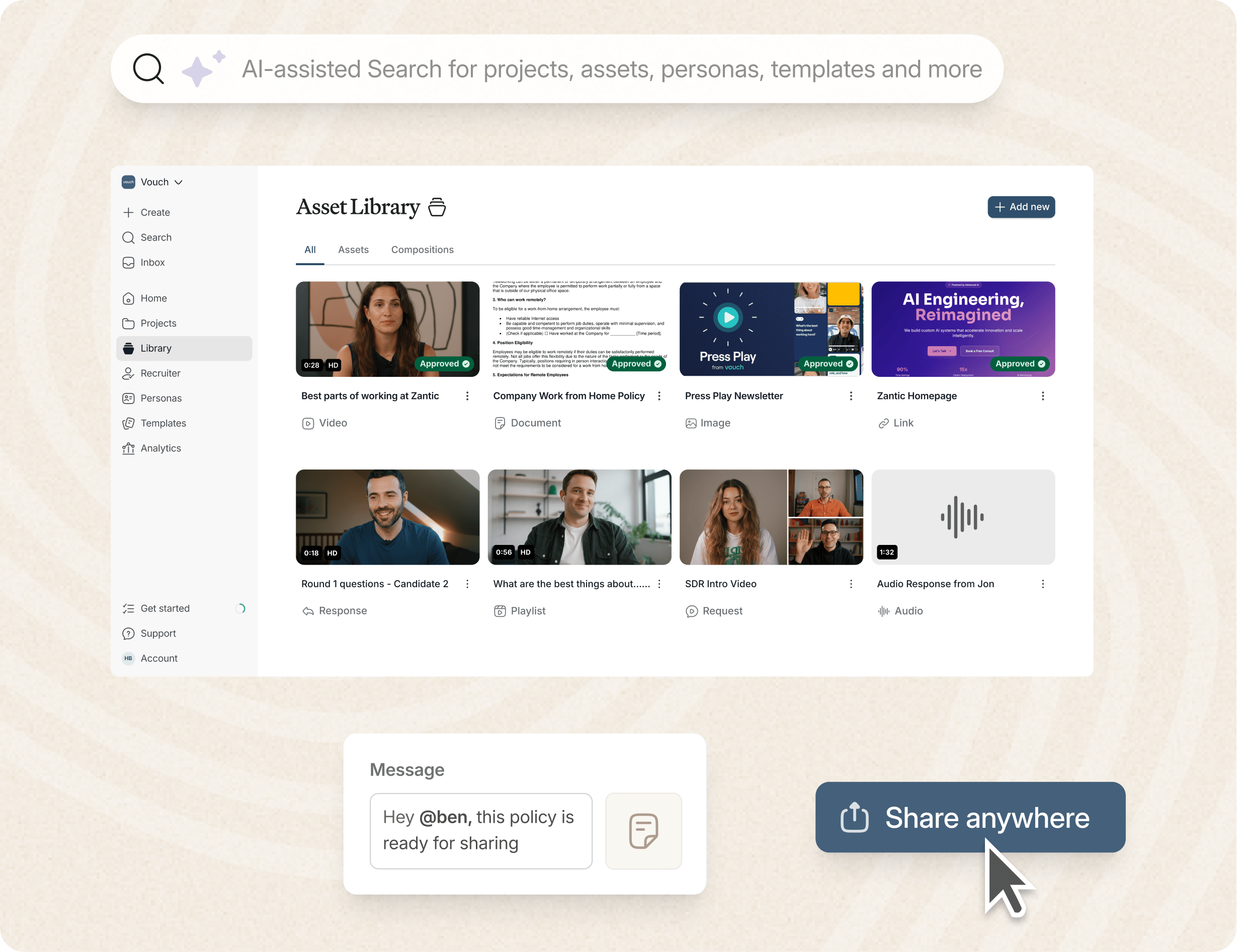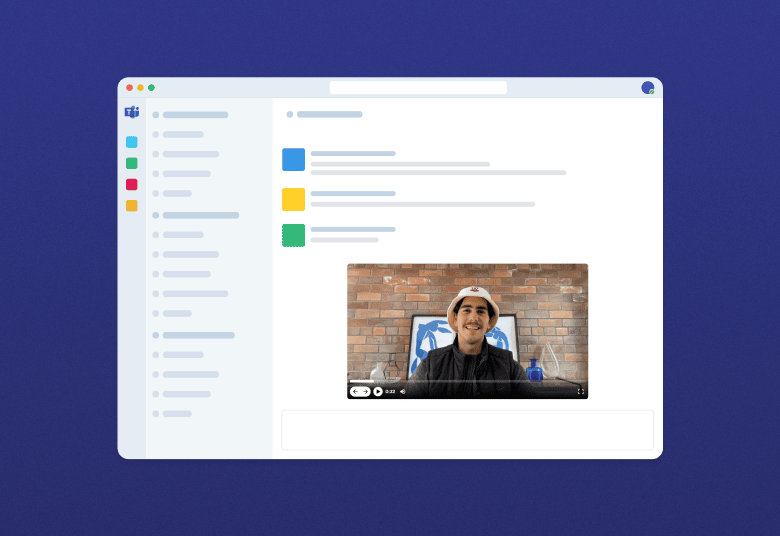
What Is Leadership Development? Discover The Latest Strategies & Data.
Every organization in 2025 needs strong leaders to navigate the challenges of a rapidly changing business landscape and the impact of technology like AI.
But great leaders aren't always born as great leaders - they're often developed, and that's where leadership development and ongoing talent development come in.
In this article, we'll explore why leadership development is essential, break down the key components of an effective leadership program, and share real-world data on how leadership development is making an impact in 2025.
Whether you're a business owner, an HR professional, or someone looking to grow in a leadership role, understanding leadership development is key to ensuring your organization's future success.
Let's dive in.
Why Is Leadership Development Critical?
Leadership development is much more than just teaching people how to manage others - it's about helping them learn to inspire teams, shape a positive organizational culture, and steer the company toward its long-term goals.
From first-time managers learning the ropes to seasoned executives refining their strategic leadership abilities, leadership development plays a crucial role at every level.
A strong leadership development program is also vital for maintaining the competitive edge of any business - as today's business environment is more volatile than ever, with leaders facing unprecedented challenges like rapid technological change, globalization, new generations entering the workforce and crisis management.
The organizations with the best leaders and effective leadership development programs will be in the best position to survive and thrive in the years to come.
The AI-enabled workspace for talent teams.
- Unified workspace for talent teams
- Accelerate hiring with AI tools
- Auto-generate polished hiring and employer brand content
- Easily repurpose assets across all channel

What Are The Core Components of Leadership Development?
According to LinkedIn Learning, 77% of organizations report that they are experiencing a leadership gap at various levels.
A big part of this is that leadership development isn't a one-size-fits-all approach. It's a continuous learning journey that aligns with an individual's career stage and the organization's goals.
Here's what leadership development typically includes:
- Skill Development: Essential leadership skills such as emotional intelligence, active listening, constructive feedback, and crisis management are critical for building strong leaders. Effective communication skills, decision-making abilities, and empathy also top the list.
- Leadership Assessments: Tools like 360-degree feedback or leadership assessments give individuals and their organizations a clear view of current leadership competencies and potential blind spots.
- Succession Planning: Preparing future leaders requires a clear strategy for identifying and grooming high-potential employees for leadership roles. Leadership development programs often focus on succession planning to ensure the continuity of leadership across the organization.
- Mentorship and Coaching: Formal mentorship programs and executive coaching are vital components that provide employees with real-world insights and guidance from experienced leaders.
- Job Learning: A critical element of leadership development is hands-on experience. Following the 70-20-10 development model that's famously mentioned in Harvard Business Review, 70% of learning comes from job experiences, 20% from interactions with others (such as coaching or mentoring), and 10% from formal learning through courses and training sessions.
What Are The Leadership Development Steps?
The journey to becoming an effective leader involves several steps:
1. Analysis of Existing Management Potential
Organizations often begin by evaluating their current leadership strategies and capabilities. This includes looking at performance outcomes, gathering feedback, and identifying which candidates are suitable for leadership roles.
2. Setting Tangible Leadership Development Goals
These goals might include building stronger leadership behaviors, improving leadership competencies, or developing the ability to manage team development and strategy execution effectively.
3. Tailored Leadership Development Experiences
Based on the assessment, employees are enrolled in leadership development initiatives tailored to their needs. This might include formal learning programs, microlearning and online courses, or real-world projects.
4. Consistent Leadership Training
Leadership development is an ongoing process. The best programs provide continuous learning opportunities and regular feedback, ensuring leaders evolve alongside business priorities and organizational goals.
5. External Leadership Development Solutions
Many organizations partner with external expert consultants to design effective leadership development practices. For example, Harvard Business Publishing Corporate Learning offers solutions to support organizations in building future-ready leaders.
Example Case Study: Leadership Development at ABC Tech Solutions
ABC Tech Solutions, a mid-size software company, faced rapid growth over the past five years, expanding from 50 to over 300 employees. While the company experienced success, they noticed a significant gap in their leadership capabilities. Mid-level managers struggled to keep up with the company's evolving organizational strategies and strategic plans, resulting in lower employee engagement and productivity.
The Problem:
Many mid-level leaders lacked the leadership competencies needed to execute company goals effectively. Employees also reported a lack of career advancement opportunities, leading to decreased motivation and high turnover rates.
The Solution:
ABC Tech Solutions partnered with industry experts to create a leadership development program that focused on developing key leadership skills such as emotional intelligence, communication skills, and strategy execution. They adopted a 360-degree feedback system and offered leadership development courses tailored to individual contributors, first-time managers, and senior leaders.
They also introduced formal mentorship programs where high-performing employees were paired with senior-level leaders to receive guidance and feedback.
The Results:
As an example - and what we see as typical results, within one year, the company saw a 15% increase in employee engagement and a 30% improvement in leadership capabilities based on performance outcomes and feedback from the leadership assessment. Furthermore, the program helped them identify future leaders for key leadership positions, ensuring long-term success.
Real Data: Leadership Development in 2025
- Lack of Leadership Capabilities: A 2025 survey found that only 48% of employees feel their organization is adequately developing strong leaders despite leadership being a key business priority (Source: LinkedIn Learning).
- Emotional Intelligence as a Focus: More than 60% of leadership development programs in 2025 emphasize building emotional intelligence, which has been shown to improve overall team performance by 30% (Source: Forbes).
- Online Learning Surge: With more employees working remotely, 70% of leadership development courses are now offered online, providing leaders with the flexibility they need to balance continuous learning with their job responsibilities (Source: SHRM).
- Succession Planning Gap: A staggering 80% of companies still lack effective succession planning strategies, putting them at risk of leadership gaps during times of crisis (Source: Gartner).
FAQs
What is leadership development?
Leadership development involves enhancing the skills, abilities, and confidence of individuals to take on leadership roles within an organization.
Who benefits from leadership development?
Everyone in an organization, from first-time managers to senior executives, can benefit from leadership development programs.
What skills are developed in leadership development programs?
Key leadership skills include emotional intelligence, effective communication, decision-making, crisis management, and active listening.
How do you measure leadership development success?
Success is measured through performance outcomes, employee engagement scores, leadership assessments, and feedback mechanisms like 360-degree feedback.
What is the 70-20-10 model in leadership development?
The 70-20-10 model states that 70% of leadership development happens through job learning, 20% through coaching or mentoring, and 10% through formal training.
What is succession planning?
Succession planning involves preparing future leaders by identifying and developing high-potential employees for leadership roles.
How long does it take to develop leadership skills?
Leadership development is a continuous journey. Depending on the individual and the organization's goals, it can take several years of consistent learning and experience to become a highly effective leader.
Conclusion
Leadership development is an evolving process that requires time, dedication, and the right strategies in place.
Whether you're nurturing first-time managers or senior-level leaders, effective leadership development efforts will have lasting benefits for your entire organization.
Vouch Makes Leadership Development Simpler
Loved by companies like Canva, Nike, Cisco, HubSpot, Amazon, and more, tools like Vouch make creating leadership videos in your business remarkably easy.
Be sure to book a Vouch demo today and chat with a video content expert.
You might also like

Elevate Your Brand Today With Vouch
Discover how Vouch can accelerate talent acquisition while helping you stay on-brand.





